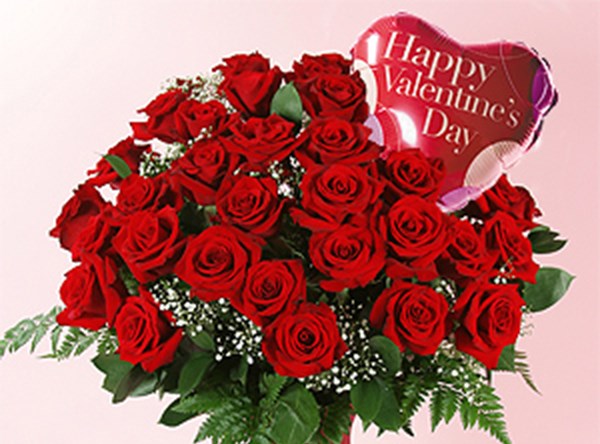There has been an enormous change in the public perception of Valentine’s Day, especially among the younger generations. It has become less about close personal relationships and more about showing appreciation of friends and family.
It is also less about spending a lot of money and more about being thoughtful of what folks might appreciate.
In the plant and flower world, it’s about succulents and air ferns in glass or ceramics for younger folks.
People who garden love miniature roses, new primulas, like ‘Sweet 16’, the double Belarinas, especially the double reds and Christmas roses (helleborus)’ — all of which can go in the garden. Kids love cactus and small windowsill plants. If you’d like to make a workplace happy, send four-inch potted spring bulbs and fragrant yellow primulas — both are inexpensive and cheerful.
In the cut flower world, tulips rule, especially in a glass vase. Spring flowers, such as daffodils and iris mixed with tulips and pussy willows, are a real treat. Fragrant lilies, stocks and freesias add a magnificent perfume to any home or office. Orchid stems are very much ‘in’ today not only because of their exotic looking flowers but also for their long-lasting quality. Gerbera daisies remain one of the most popular cuts year-round. With so many great local growers providing world-class product, the range of flowers in BC today is amazing.
Locally-grown orchid plants are, perhaps, the best buy for value — their blooms can last for months. The plant should be placed near an east or north window, kept humid and not over-watered. Local anthuriums, with their heart-shaped white, red or pink flowers that last seemingly forever, are so easy to care for.
Although not as long-lasting, potted tulips and fragrant ‘Bridal Crown’ narcissus are among the favourites for Valentine’s Day. And oh yes, roses are still the most recognized Valentine’s flower and red is the favourite colour. But remember, there are so many other beautiful colours of roses from pure white, pink and yellow to salmon orange, mauve and bi-colours like the red and white ‘Sweetness’. Roses are more expensive because of the worldwide demand but a single rose or three or six, are still much appreciated.
In today’s somewhat challenging world, science is discovering new and important relationships between plants and people and here are five points condensed from the research of Dr. Jeannette Haviland-Jones of Rutgers University.
Flowers have an immediate impact on happiness. Study participants expressed true or excited smiles upon receiving flowers, demonstrating extraordinary delight and gratitude. This reaction was universal, occurring in all age groups.
Flowers have a long-term positive effect on moods. Study participants reported feeling less depressed, anxious and agitated after receiving flowers and demonstrated a higher sense of enjoyment and life satisfaction.
Flowers make intimate connections. The presence of flowers led to increased contact with family and friends.
Flowers are a symbol for sharing. The study explored where in their homes people displayed flowers. Once received, arrangements were placed in areas of the home that are open to visitors — such as foyers, living rooms and dining rooms, suggesting that flowers make a space more welcoming and create a sharing atmosphere.
People who buy more flowers are happier. Once learning the study results, participants in all age and gift categories reported that they would be buying more flowers in the future.



